
You don't need a large brick oven and years of experience to make an authentic pizzeria-style pizza crust in the average home kitchen. All you need to make a delicious restaurant-style version of a classic Italian pie is some standard equipment, a good recipe and the proper ingredients. One of those ingredients is olive oil, which is primarily used in, and brushed on, the crust.
Oil While Kneading
Keeping raw pizza dough from sticking to your fingers and the mixing/kneading bowl is often a challenge. Lightly covering the dough ball and the sides of the mixing bowl with olive oil makes it a lot easier. As you knead with olive oil, you'll find that stickiness is less of a problem, and you'll bit more flavor inside your crust. Be sure to use pure olive oil for the best effect and flavor, not a blend.
Before Cooking
Once the crust is laid out, lightly brush it with olive oil before adding sauce and toppings. Not only is this another flavor enhancer, it aids the cooking process in the oven and helps add color to the finished pie. The end result is a crust with a golden sheen and a slight bit of crunch, adding a nice texture and chew to the pizza.
Out of the Oven
One your pie is fully cooked and comes out of the oven, it's time to brush the outer edges of the crust with olive oil. Additional oil is optional, but not excessive. Brushing the outer edge of the crust, which has expanded while cooking, adds another layer of flavor and a wet sheen that you can then garnish with grated cheese and spices. The new wet layer of oil helps grated Parmesan cheese stick easily to the crust, or any other sprinkling spice you want to add, such as cracked black pepper, garlic powder, oregano and other Italian-style spices.
A Butter Way
While olive oil works best on the crust before you put it into the oven, when it comes out, try brushing the edges with melted butter instead of another layer of oil. This provides a different flavor experience that only real butter can impart. Garlic butter also works, and mixes well flavor-wise with Parmesan cheese. Use butter only for brushing the outer edges after it comes out of the oven, not in place of olive oil when preparing the crust.
Related Articles

Do You Put Olive Oil on the Pizza Dough ...

How to Get Pizza Crust to Brown

How to Grill With a Pizza Stone and ...
How to Make a Pie Crust Brown at the ...

What to Do With Pizza Dough When You're ...
Secret to Making Soft Chewy Italian ...

How to Freeze an Unbaked Pizza Crust
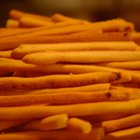
How to Make Bread Sticks Out of Pizza ...

How to Make Thin Extra Crispy Pizza ...

Cooking Pizza With Fresh Mozzarella

How to Bake With a Pizza Screen

Papa John's Nutrition Facts for Whole ...
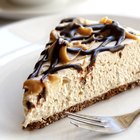
How to Bake Non-Graham Cracker ...
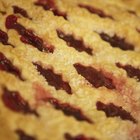
Healthy Pie Crusts With Garbanzo Bean ...

How to Make Homemade Pizza Without Yeast

How to Make Your Pizza Crust Crispy

How Long and at What Temperature Do You ...

How to Refinish Cast Iron Cornstick Pans
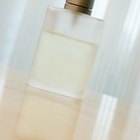
How to Make Dry Oil
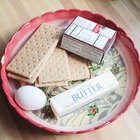
How to Keep Graham Cracker Crusts From ...
References
Resources
Writer Bio
Blake Guthrie covers travel, entertainment and outdoor recreation for many outlets, including the Atlanta Journal-Constitution, where he is a regular contributor. With years of experience as a professional cook, Guthrie also relishes writing about food and beverage topics. He earned a Bachelor of Arts in mass communications from Auburn University.
Photo Credits
Jupiterimages/Stockbyte/Getty Images